Whenever you think of succulents, you don’t always think of plants that grow like vines. But there are quite a few succulent vines, and among the most beautiful include the callisia repens, otherwise known as the pink lady. With its soft and delicate features, there’s no denying that it is aptly named.
Like most plants in the succulent family, the callisia repens only need to be watered at least once a week. However, it prefers basking in direct sunlight to thrive, so it’s best to have it placed near windows.
Fortunately, the pink lady doesn’t need a lot of attention to survive. As long as it’s getting enough water and sunlight, it will grow well without much intervention on your part.
With that said, there are several tips and tricks you can use to ensure maximum health – and this article will discuss them in detail.
What Is Callisia Repens?
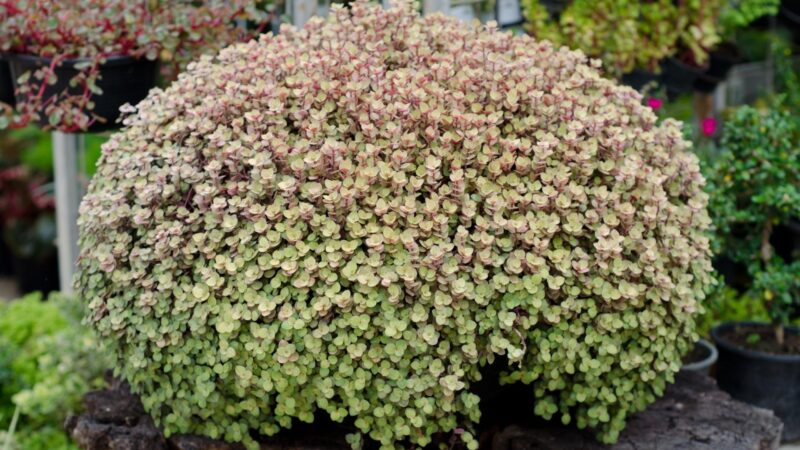
Callisia repens is a small plant with small glossy leaves that creeps and cascades beautifully over its pot. Otherwise known as pink lady or turtle vine, this succulent vine is noted for its dense pink or burgundy foliage – thus making it a lovely addition to your home.
The pink lady is a popular indoor plant, owing to its non-toxic and odorless nature. Since it belongs to the succulent family, it thrives even when given little attention.
- Scientific Name and Common Names: Callisia Repens, Creeping Inchplant, Turtle Vine, Pink Lady, Bolivian Jew
- Appearance: The callisia repens is a creeping or vine plant with small, glossy leaves. The leaves can grow to around 2 inches long and often have a beautiful burgundy or pink color. Its vines can grow to be quite long, often at a rate of 20 inches per year. Some stems appear pink or burgundy, while others appear bright green.
- Origin: Texas, Mexico, Central America, South America
- Indoor or Outdoor plant: Indoor or Houseplant
- Height and structure: As a creeping plant, the callisia repens can grow at a rate of 20 inches per year. It has thin vines with thick foliage of heart-shaped leaves, which is why its stems are barely noticeable.
How to Take Care of Callisia Repens?
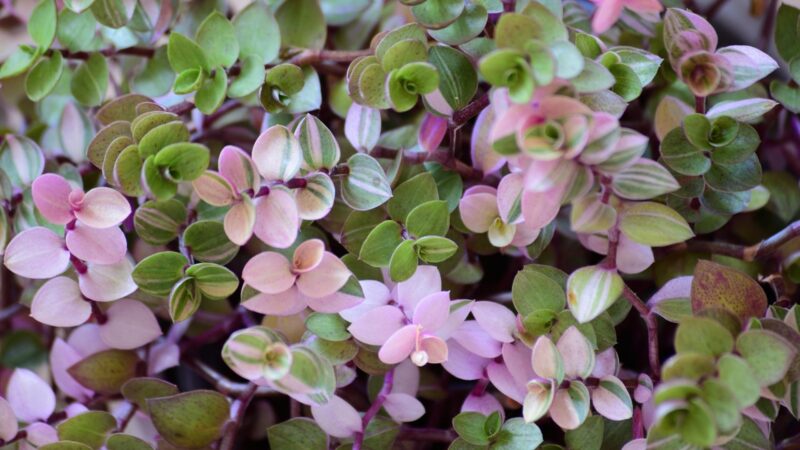
Lighting
What’s interesting about the callisia repens is that it thrives when exposed to sunlight. Without exposure to the sun, it will not produce the lovely pink hue it’s especially known for.
However, too much direct sunlight can cause it to dry up. That’s why you should learn how to balance out its need for sunlight vis-a-vis keeping it from being dehydrated.
With that said, it’s best to leave it at a distance of around six feet away from an opening where sunlight can easily enter your home. This way, it is getting enough light but without direct exposure to the sun’s drying rays.
Water
Bear in mind that callisia repens belongs to the succulent family. As such, it doesn’t require frequent watering – a few sprays once a week would suffice.
However, you should take note of signs that will tell you when the plant needs more or less water. For example, if the soil looks too dry and you spot some leaves turning brown, then your callisia repens are dehydrated.
On the other hand, if the leaves and stems look yellow and rotting, then your plant is overwatered. These cues will guide you as to whether you should increase or decrease your plant’s water intake.
Since Turtle Vines are often hung on tall areas, you can use the Yrzper Watering Can for Indoor Plants to easily reach it when spraying water.
Temperature and Humidity
Callisia repens thrives in warm and humid weather. Specifically, it prefers a temperature ranging between 50 and 90 degrees Fahrenheit and humidity levels at around 40 to 50 percent. That’s why they mostly grow during the spring and summer seasons.
Soil
The callisia repens prefer soil that’s well-draining to make sure that it doesn’t retain too much moisture. You can opt for high-fiber peat soil since it is great at draining moisture while retaining all the nutrients your plant needs. Alternatively, you can use a high-nutrient potting mix like the Back to the Roots Natural & Organic All-Purpose Peat-Free Potting Mix to ensure your Turtle Vine’s growth.
Fertilizer
The callisia repens is a fast-growing succulent. As such, it does not need fertilizer to grow. A good potting mix, sufficient lighting, and good hydration are enough for it to thrive.
However, if you wish to boost your Turtle Vine’s nutrient absorption, you may feed it fertilizer at least once a month. For easier absorption, you may opt to use liquid fertilizer like the Miracle-Gro Indoor Plant Food that you can apply directly on the soil or mix with water and spritz over the soil for an even distribution of nutrients.
Potting and Repotting
Bear in mind that the callisia repens is a creeping plant. As such, it has to be placed somewhere that will allow its vines to grow long and healthy. That’s why the ideal pot for this succulent vine is a hanging pot – one that offers proper air circulation for the roots while still offering good drainage.
In terms of repotting, the callisia repens don’t need frequent repotting. In most cases, its owners prefer to prune it and then let its vine grow long enough to need repotting.
But if you prefer to re-pot it, make sure to transfer it into a pot that’s twice the size of your current pot. As to when it needs repotting, it largely depends on the size of the vines and whether or not the current pot can still take on its weight.
How to Propagate Callisia Repens?
Propagating callisia repens is a great way to produce more of this plant. You can do so through cuttings from the mother plant, using its offsets, or through seeds.
How to Propagate Callisia Repens ‘Pink Lady’ From Cuttings?
One of the fastest ways to propagate callisia repens or pink lady is through its cuttings. This way, you already have healthy stems from the mother plant that will grow roots from the nodes.
As soon as the roots have grown and are established on the soil, then the cutting continues to grow as an independent plant. It will take around a week or two for the cuttings to grow roots and transition into a separate plant.
- The first step is to identify the healthy stems of the callisia repens. Once you have chosen the stem, look through the stem for nodes. These nodes look like lumps on the stem and are usually close to where the leaves grow out from. It’s important to identify the presence of nodes since this is where the roots will grow.
- With a scissor or a sharp knife, cut through the nodes and plant the cuttings in a pot with the soil mix. Water the planted cuttings accordingly to help them grow roots.
- During this period, it’s best to keep the plant away from direct sunlight so as not to dry up its leaves.
How to Propagate Callisia Repens ‘Pink Lady’ From Offsets?
Aside from the cuttings, you can also use offsets from the mother plant. However, bear in mind that offsets usually take years to grow, so not every callisia repens plant already has them.
- Once you notice an offset in your pink lady, carefully cut the daughter plant or separate it from the mother plant with a pair of scissors.
- Since the daughter plant already has its roots, the next step would be to plant it in its pot. Once planted, simply give it a few sprays of water and give it enough exposure to sunlight.
- As a tip, it’s best to propagate with an offset during the callisia repens growth period, which usually falls during the summer or spring seasons.
How to Propagate Callisia Repens ‘Pink Lady’ Using Seeds?
If you have no access to a mother callisia repens, then the best option is to propagate through seeds.
- To start, simply fill the pot halfway with porous well-draining soil. Then, spread callisia repens seeds on top of it.
- Once the seeds are planted, pour a layer of potting mix on top of the seeds and spray enough water to keep the soil and potting mix moistened. Do not allow the seeds to drown in water; otherwise, they might not germinate at all.
How to Prune Callisia Repens?
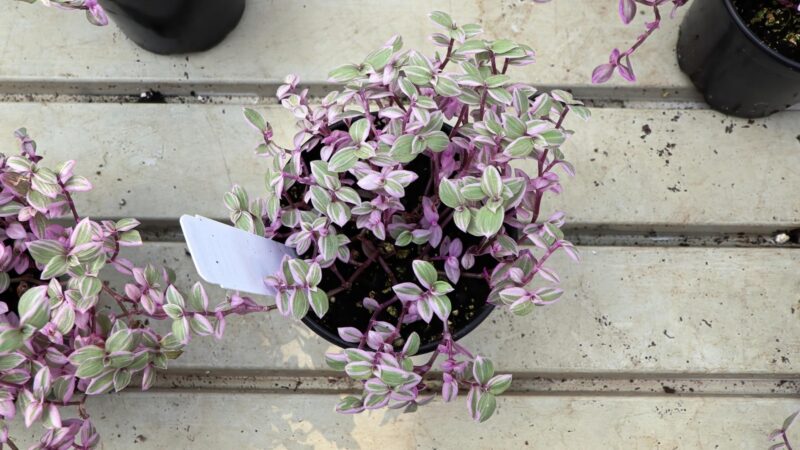
Like all other plants, callisia repens also need pruning to make sure that it always looks tidy. Here are some tips that you can use as you prune your Turtle Vine.
- With pruning scissors, such as the Lumo-X Pruning Snips, simply cut out the tips of the vine to prevent it from trailing. This will keep it looking tidy and maintain that lovely ball shape.
- You should also cut off the stems and leaves that already seem to be rotting away. These usually appear black, yellow, or brown.
- If you want your callisia repens to trail down, make sure to prune away the stems and leaves that already appear green. By doing so, your plant maintains its beautiful pink color as it grows.
How to Use Callisia Repens to Decorate My Home?
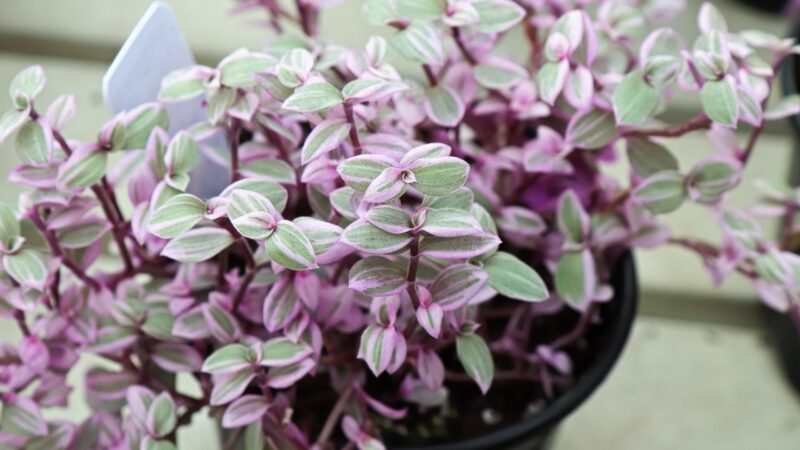
Because of its delicate beauty, there’s no denying that the pink lady makes a great decoration for any indoor space. It’s a sure eye-catcher, especially since it adds a pop of color to a seemingly dull room. Here are the ways you can use it to decorate your home:
- As a table ornament. You can simply put the callisia repens on your center table and allow the stems to flow over the pot. Once the vines reach the table, you can simply prune them to keep them looking tidy. Alternatively, you can place the pot on an elevated stand to allow the vines to grow longer.
- As a wall ornament. If you want to show off your callisia repens in its full glory as a creeping plant, the best option is to hang it on a pot as a wall ornament.
Common Problems With Callisia Repens
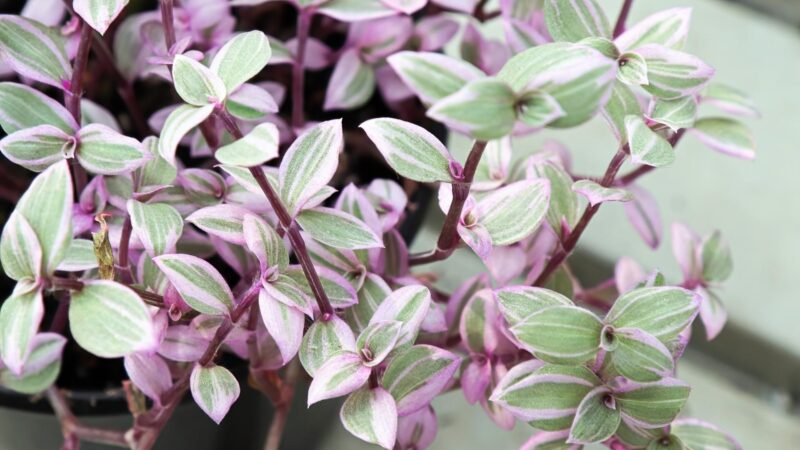
Dehydration. The most common problem associated with callisia repens is how it becomes dehydrated easily. While it belongs to the succulent family, it does not retain as much moisture as other succulents like cacti.
Dehydration usually happens when it has been exposed and left under the sun for too long. Thus, it must be placed in an area where it only gets indirect exposure to the sun.
Fast-growing. While the pink lady doesn’t need a lot of watering, it is considered a fast-growing vine. With that said, you may have to trim the stems regularly to prevent them from looking unkempt.
Overwatering. In contrast to dehydration, callisia repens are also susceptible to being overwatered. Once it is overwatered, its leaves and stem turn yellow and start to rot. Thus, make sure they’re only sprayed a few times – preferably once a week or twice a month.
With a nickname like “Pink Lady,” you can expect a plant that looks beautiful and delicate. With its pink or burgundy tones and breathtaking vines, it can truly make heads turn. Fortunately, it’s so easy to care for. It is a low-maintenance plant that doesn’t take too much of your time, which makes it the ideal companion for all the busybodies out there.